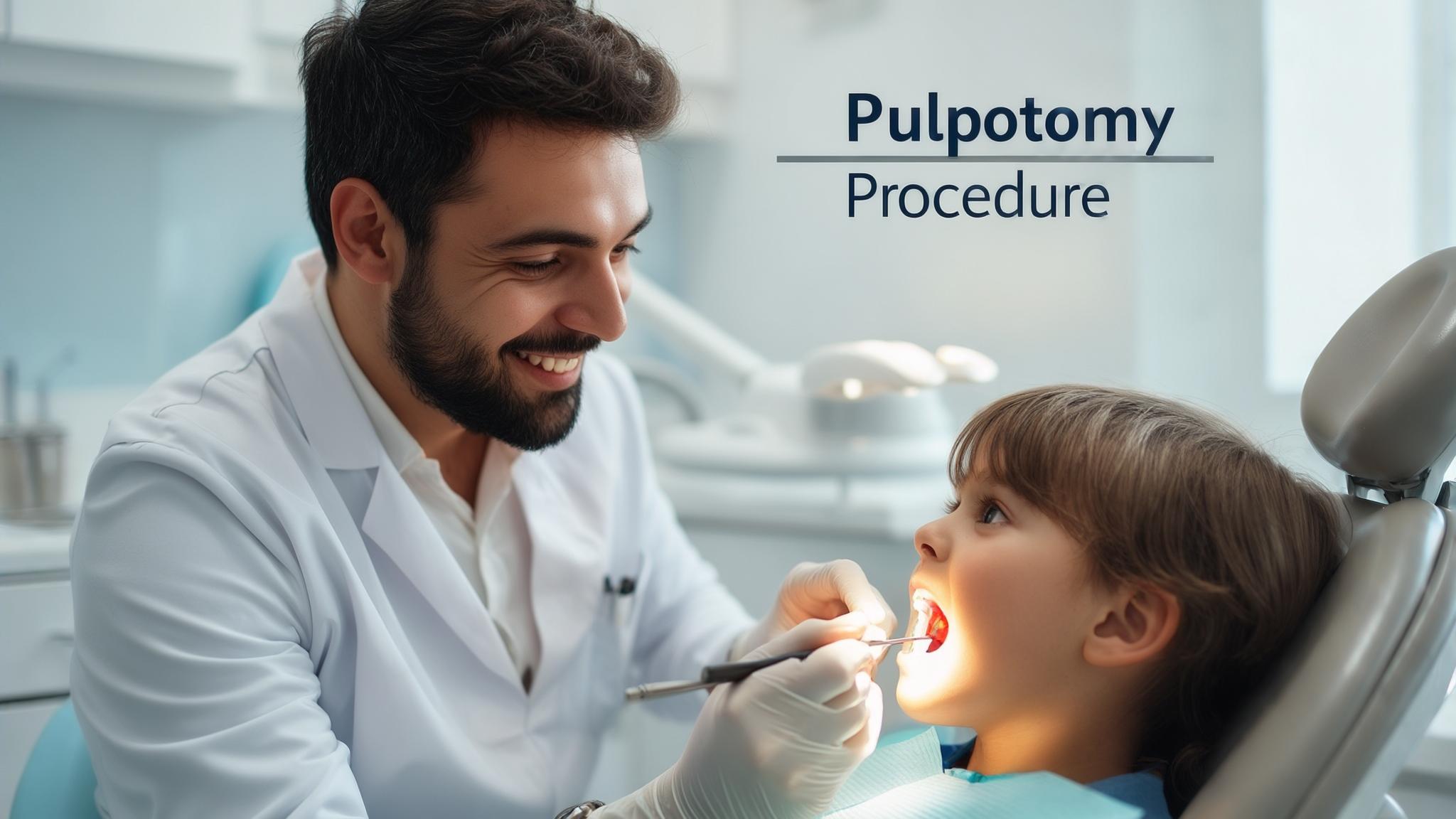Children's Dental Health: The Foundation of a Bright Smile
Taking care of children's teeth is crucial not just for their oral health but also for their overall well-being. Healthy teeth help kids chew, speak, and smile confidently. Pediatric dentistry focuses on preventing and treating dental issues in children, ensuring their teeth develop properly. Among the various procedures in this field, a pulpotomy is often performed to address specific dental problems. This article will explore what a pulpotomy is, why it's needed, and how it benefits your child's dental health.
Understanding Pulpotomy
A pulpotomy is a dental procedure primarily used in children's dentistry to treat a tooth with infected or damaged pulp. The pulp is the soft tissue inside the tooth that contains nerves and blood vessels, playing a vital role in the health and development of the tooth. It helps in nourishing the tooth and keeping it alive. When the pulp becomes infected due to cavities or injury, it can cause pain and lead to more severe dental issues. A pulpotomy aims to remove the affected pulp tissue, preserving the rest of the tooth.
Reasons for Pulpotomy in Children
Several dental issues may necessitate a pulpotomy in children:
- Dental caries (cavities): Tooth decay can reach the pulp, causing infection and pain.
- Trauma to the tooth: Accidents or falls can damage the pulp, needing immediate attention.
- Developmental defects: Some children may have tooth defects that expose the pulp.
Signs that your child might need a pulpotomy include:
- Persistent pain in a tooth.
- Sensitivity to hot or cold foods and drinks.
- Swelling or redness around the affected tooth.
The Pulpotomy Procedure
Here's a step-by-step look at what happens during a pulpotomy:
- Initial Examination and Diagnosis: The dentist examines the tooth and takes X-rays to assess the damage.
- Local Anesthesia: To ensure your child is comfortable, the dentist administers local anesthesia.
- Tooth Isolation: A rubber dam is used to keep the tooth dry and free from saliva.
- Removal of Decayed Pulp Tissue: The dentist removes the infected pulp from the tooth's crown.
- Cleaning and Disinfecting: The pulp chamber is thoroughly cleaned and disinfected.
- Filling the Chamber: A suitable material, often a medicated paste, is used to fill the chamber.
- Restoring the Tooth: The dentist restores the tooth with a crown or filling to protect it.
The procedure typically takes about 30 to 45 minutes, and parents can expect their child to be comfortable throughout, thanks to modern dental techniques.
Aftercare and Recovery
After a pulpotomy, it's important to follow these care instructions:
- Avoid hard or sticky foods for a few days to protect the treated tooth.
- Maintain good oral hygiene by brushing gently around the treated area.
- Monitor for any unusual symptoms like prolonged pain or swelling.
Some mild discomfort or sensitivity is normal, but if it persists, contact your dentist. Regular follow-up appointments are crucial to ensure the tooth heals properly.
Benefits of Pulpotomy
A pulpotomy offers several benefits for your child's dental health:
- Preservation of Natural Tooth Structure: Keeping the tooth intact helps maintain its function.
- Prevention of Further Issues: It stops the spread of infection, preventing more complex problems.
- Proper Alignment of Teeth: Retaining the tooth helps in maintaining the correct alignment as your child grows.
- Cost-Effectiveness: It's often less expensive than extraction and replacement options.
Conclusion
Pulpotomy is a valuable procedure in pediatric dentistry, helping to preserve children's natural teeth and prevent further complications. Regular dental check-ups are vital in detecting issues early and ensuring your child's oral health is on the right track. By understanding and prioritizing dental care, you're setting the foundation for your child's lifelong healthy smile.
References
For further reading on pulpotomy and pediatric dentistry, consider exploring resources from the American Academy of Pediatric Dentistry or consulting studies available through PubMed. These sources provide comprehensive insights into the latest research and guidelines in children's dental care.

